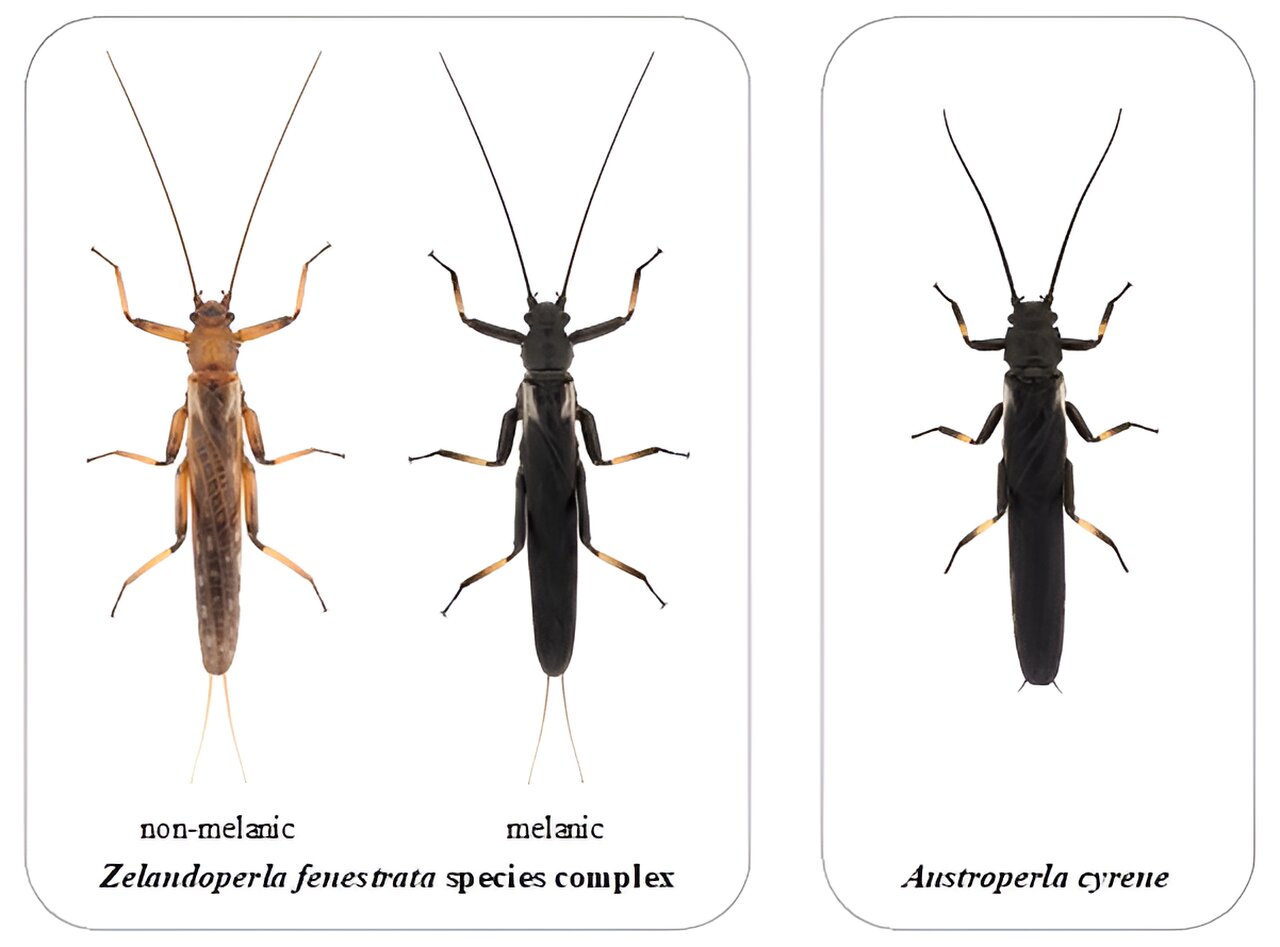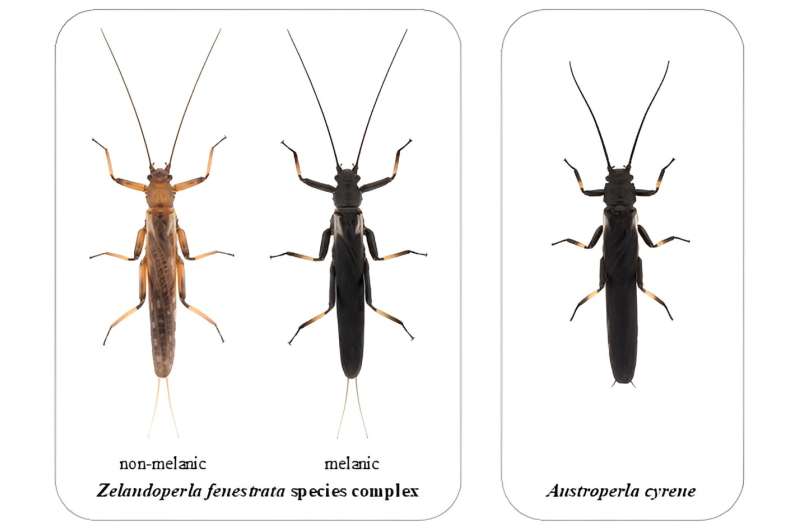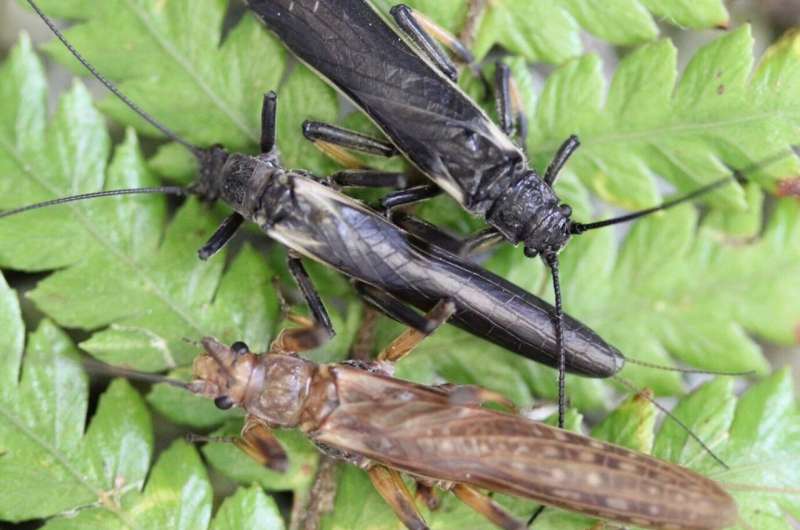

Researchers have revealed the unique ‘cheating’ strategy a New Zealand insect has developed to avoid being eaten—mimicking a highly toxic species.
In nature, poisonous species typically advertise their toxicity, often by producing high contrast colors such as black, white and yellow, like wasps and bees.
Along similar lines, New Zealand’s cyanide-producing stonefly, Austroperla cyrene, produces strong “warning” colors of black, white and yellow, to highlight its threat to potential predators.
In a study published in Molecular Ecology, University of Otago Department of Zoology researchers reveal that an unrelated, non-toxic species ‘cheats’ by mimicking the appearance of this insect.
Lead author Dr. Brodie Foster says by closely resembling a poisonous species, the Zelandoperla fenestrata stonefly hopes to avoid falling victim to predators.
“In the wild, birds will struggle to notice the difference between the poisonous and non-poisonous species, and so will likely avoid both.
“To the untrained eye, the poisonous species and its mimics are almost impossible to distinguish,” he says
The researchers used genomic approaches to reveal a key genetic mutation in a coloration gene which distinguishes cheats and non-cheats.

This genetic variation allows the cheating species to use different strategies in different regions. However, co-author Dr. Graham McCulloch says the strategy, known as Batesian mimicry, doesn’t always succeed. “Our findings indicate that a ‘cheating’ strategy doesn’t pay in regions where the poisonous species is rare,” he says.
Co-author Professor Jon Waters adds cheating can be a dangerous game. “If the cheats start to outnumber the poisonous species, then predators will wake up to this very quickly—it’s a bit of a balancing act,” he says.
The team is assessing how environmental change is driving rapid evolutionary shifts in New Zealand’s native species.
More information:
Brodie J. Foster et al, ebony underpins Batesian mimicry in melanic stoneflies, Molecular Ecology (2023). DOI: 10.1111/mec.17085
Provided by
University of Otago
Citation:
When cheating pays: Survival strategy of insect uncovered (2023, August 1)
retrieved 1 August 2023
from https://phys.org/news/2023-08-pays-survival-strategy-insect-uncovered.html
This document is subject to copyright. Apart from any fair dealing for the purpose of private study or research, no
part may be reproduced without the written permission. The content is provided for information purposes only.